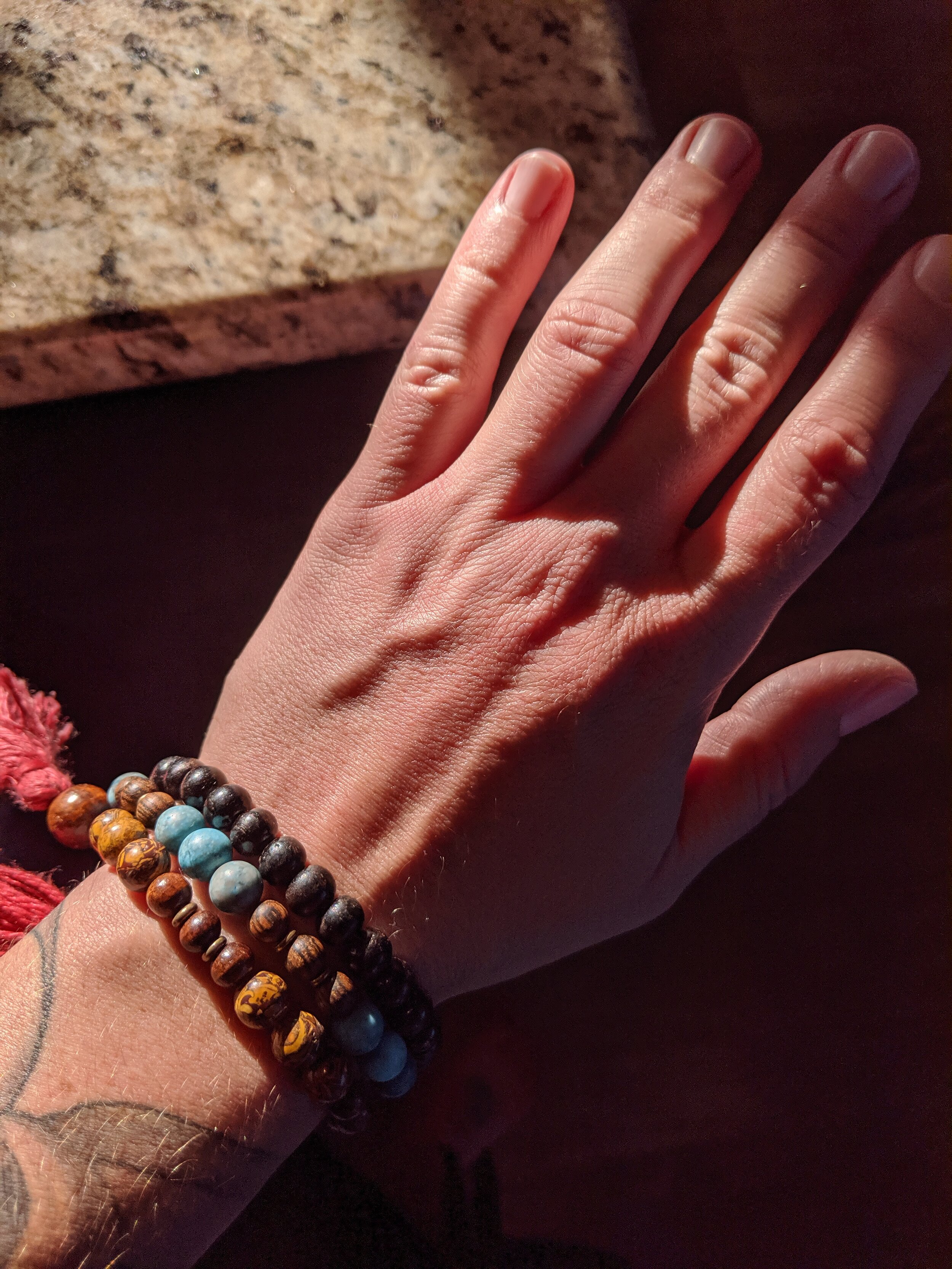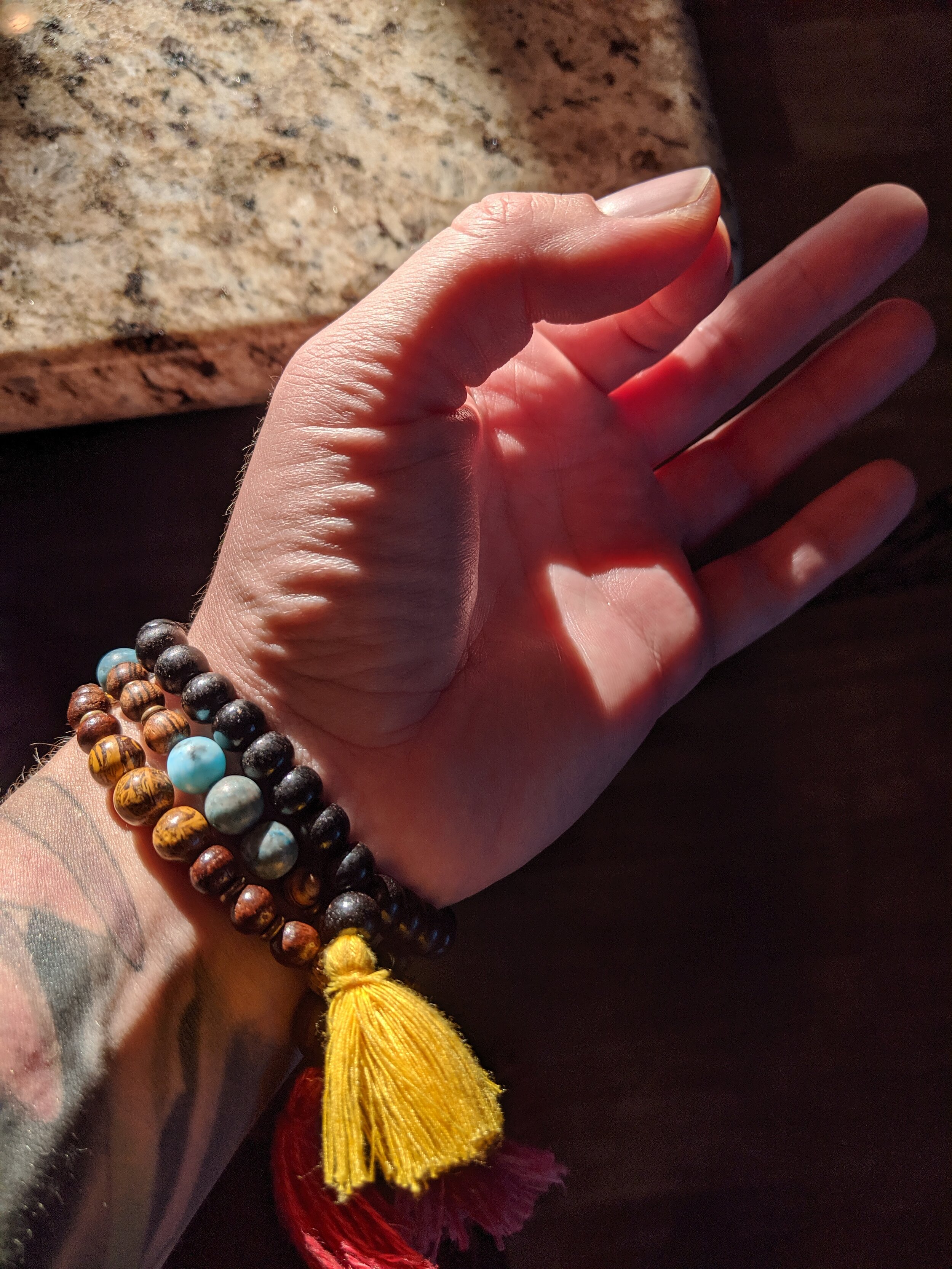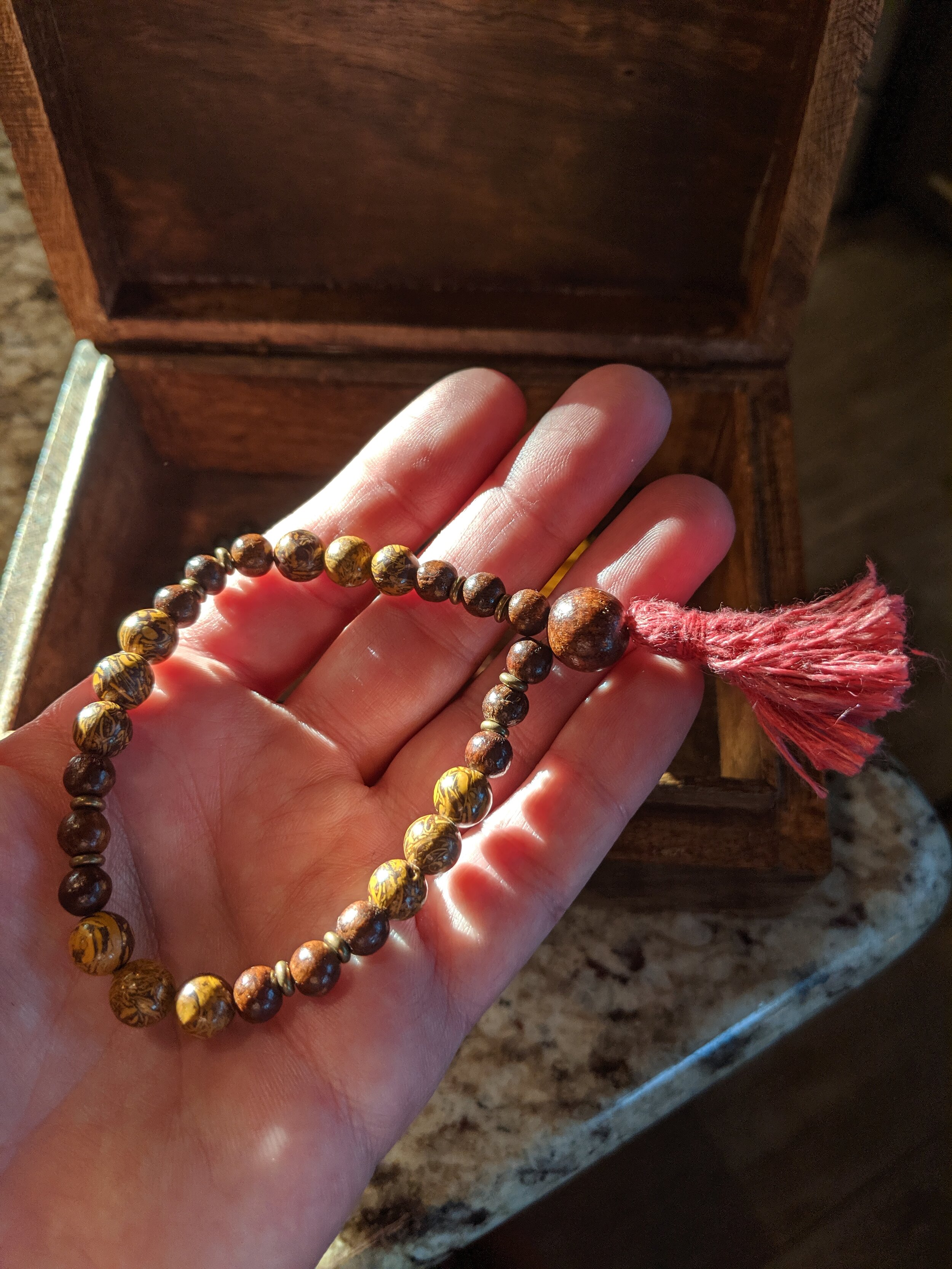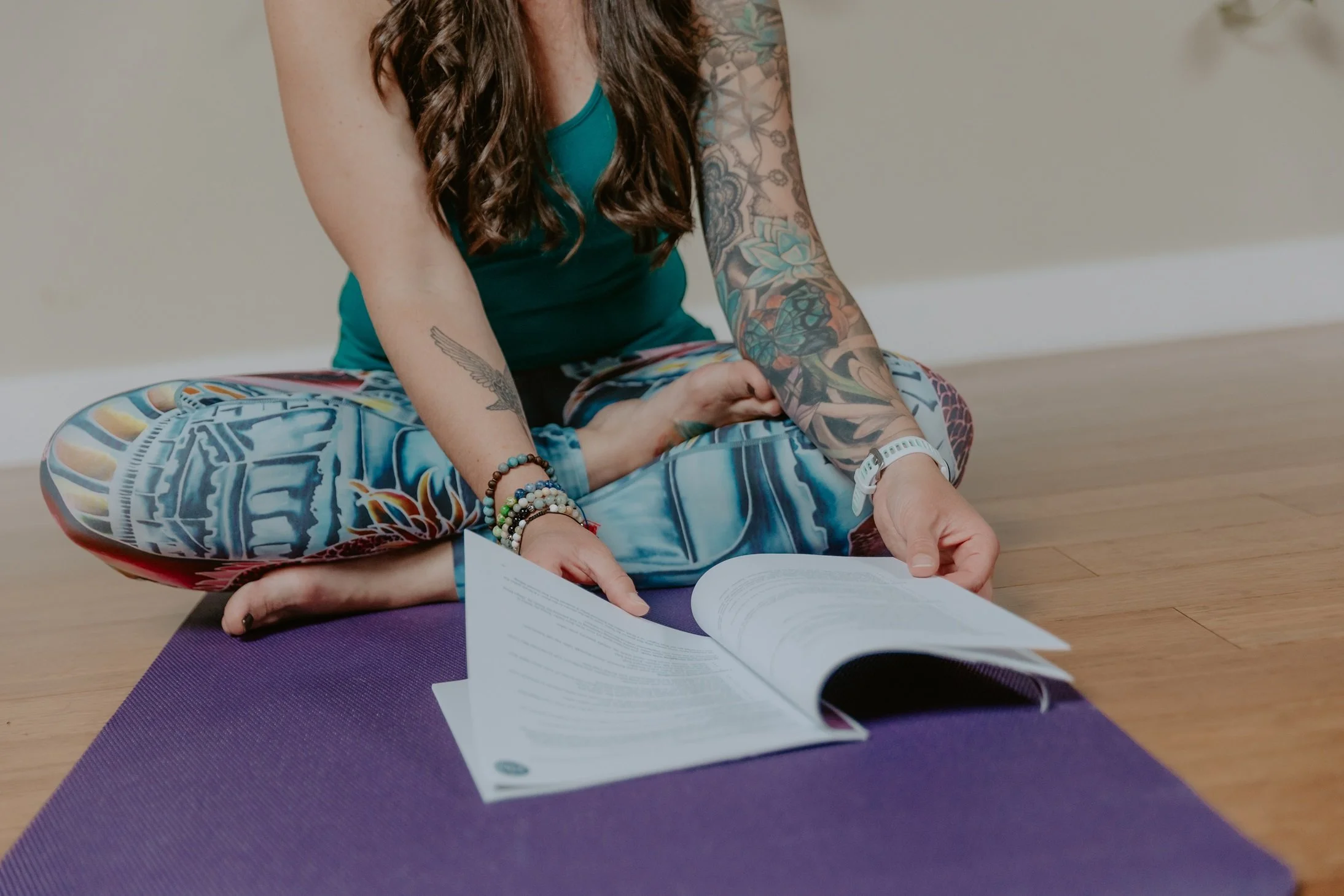Mala Beads
/Have you guys ever tried chanting, or using mala beads to recite a mantra?
I love this practice and find it to be very grounding, empowering, and healing.
My favorite mala beads are from Japa Mala Beads. I love that their team crafts them with the intention of healing, and that the gemstones are used specifically based on their unique healing properties.
These are the three I wear often, along with the mantras I use them for, and the energy they carry:
Blue Zebra Jasper and Tigerskin Sandalwood Wrist Mala: OM MANI PADME HUM
This mala has the energy of balance, calm, vitality, concentration and strength.
Elephant Skin Jasper and Taxus Wood Wrist Mala: OM NAMO NARAYANAYA
This mala has the energy of concentration, protection and insight.
Ebony Wrist Mala: OM NAMAH SHIVAYA
This mala has the energy of love and protection.
The colors are so beautiful! I love it.
Here are more ideas about how to meditate using your mala beads, with thanks to Japa Mala Beads for sharing this helpful information!
How to Meditate Using Mala Beads
The word mala has its roots in Sanskrit, which is often associated with the language of yoga. Mala literally means Garland, like the Garland of flowers that you often see given around a neck, like a Hawaiian Lei. In ancient India you see garlands offered to teachers and deities as a sign of devotion and reverence and so too should the mala used in this way. A mala is a prayer bead strand, most commonly used in meditation as a tool to tether the mind to universal consciousness.
Malas are most frequently used in combination with a mantra, a tool of the mind that sometimes given by a meditation teacher or sometimes we just find one that our heart really resonates with if we don't have a teacher who is giving or prescribing a mantra.
There are 108 beads on a mala, and then there's a big bead with the tassel at the end, and that's called the guru or meru bead. This bead represents the energy that dispels, that shines a light on the darkness to dispel the darkness. The guru bead is said to store the energy and intentions of your meditation practice and should not be touched.
When we chant with a mala, there's a traditional way in which we practice. We use the middle finger and the thumb to touch the beads of the mala. We don't use the index finger to touch the beads, and it is preferred only to use the right hand for mala practice. The Index finger is associated with individuality, desires, humanity, and also blame and separation.
The palm faces up, and the elbow is soft, as we chant and move through the mala touching each bead with each mantra that we say internally or out loud. When we get to the end, you'll find you'll bump against the guru bead. We don't want to touch or cross over the guru bead. We instead turn around and go back where we came from if we want to complete another round of 108 mantas.
Just like other types of meditation, we want to have a comfortable seat and a long tall spine while practicing. The breath should be slow, steady, and deep throughout the meditation. It is helpful to create and set an intention before beginning a mantra meditation practice. This intention can also help guide you in selecting the best mala to use for your meditation and chanting.
More Information
The practice of chanting a Sanskrit mantra while using mala beads is called japa meditation. Japa meditation is generally performed while seated but can also be done standing and while walking. There are four main steps for practicing meditation with your mala beads:
1. It is very important to be in a comfortable yet well-aligned position for meditation. Traditionally mantra meditation is done seated on the floor. Cushions or folded blankets can be used under the sitting bones to keep the back comfortable. If seated in a chair have the feet flat on the floor and keep the spine straight–do not lean into the back of the chair if possible. Root down through the legs as you lift up through the crown of the head. Keep the shoulders relaxed and the heart open and lifted. The most common seated poses for meditation are Easy Pose, Accomplished Pose, Hero Pose, and Half Lotus Pose.
2. During japa meditation the eyes can be open with a soft gaze or the eyes can be gently closed. The breath should be slow, deep and relaxed.
3. Hold your mala in your right hand (in India the left hand is considered impure) and use your thumb to “count” each mantra by touching the bead during the recitation of the mantra. The mantra is repeated silently or aloud and can be repeated as slowly or as quickly as necessary to keep one’s attention focused. On each recitation lightly pull the bead towards you as you complete the mantra to moving to the next bead. The index finger is extended away from the hand and should not touch the mala or be used for counting. The large meru (mountain) or guru (teacher) bead should not be counted or touched by the thumb. It is used as the marker for the starting and ending point of the recitation. Continue by pulling the beads with each mantra until you end at the meru and have completed 108 repetitions. (If you have a wrist mala of 27 beads you will need to repeat this 3 more times.) You can continue with the practice chanting multiples of 108 mantras.
4. Keep your mind focused on the mantra and focused on the feeling of the thumb touching the mala bead. When thoughts arise shift your focus back to the mantra and the mala. Experiment with the tempo of the mantra recitation to find the pace that is most able to focus your attention. Some yogic and Buddhist traditions synchronize the breath with the chanting to further help to focus the mind.
A big thank you to the generous team at Japa Mala Beads. My meditation practice would not be the same without you! ;)






















